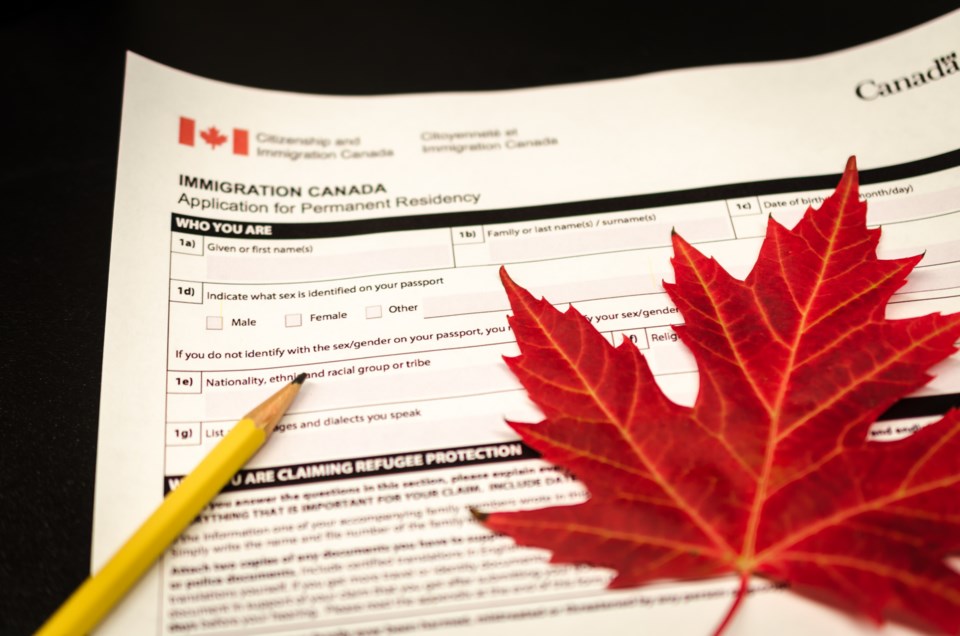There’s a very basic math problem facing B.C.’s labour force, according to Ken Peacock:
“Even if everybody in the ranks of the unemployed was totally employable and could start a job tomorrow, there wouldn’t be enough people physically in the province to fill all the job vacancies,” said the chief economist at the Business Council of B.C. (BCBC).
His industry association estimates there are between 150,000 and 160,000 job openings in B.C.
Unemployed workers who compose the core working age group – men and women 25-54 years old – amount to 80,000 on the West Coast. And those on the periphery of the core working age don’t come anywhere close to bridging that gap between those 80,000 workers and the 160,000 job openings, Peacock said.
“It does keep me up at night,” B.C. Jobs Minister Ravi Kahlon said about the disparity between job openings and available workers in a province where the unemployment rate stood at 4.3 per cent in September.
His government’s most recent labour market outlook, released this past February, forecasts just over one million job openings in the province over the next decade.
“The question is, where are the people going to come from?” Kahlon said.
Despite record inflows of immigration during the pandemic, the number of newcomers arriving in B.C. may not be enough to meet labour market demand.
More than 269,000 immigrants arrived in the country during 2022’s second quarter – the largest number on record, according to Statistics Canada.
Rather than bringing in 411,000 newcomers this year, as outlined in plans announced in October 2020, the feds revealed in February they were upping that target and aiming to bring in 432,000 immigrants by the end of 2022. Ottawa ultimately hopes to attract 1.3 million immigrants from 2021-23.
“Even ramping up immigrants very dramatically as the federal government has done is probably not going to provide enough immigrant workers to fill these openings,” said Peacock.
“It would be foolish to say it doesn’t help. Just looking at the numbers, it’s very clear they’ve ramped up significantly. But very quickly … you get into skill-matching. Which roles are open? Are these immigrants qualified? Etc., etc. Many of them may be, but the likelihood of skills matching directly and people rolling right into the job market is probably a little more nuanced.”
Despite those challenges, the BCBC estimates there is currently an 80 per cent participation rate in the province’s labour market among newcomers who’ve arrived within the last five years.
Meanwhile, the province’s most recent labour market outlook projects that there will be 142,900 job openings in health care and 140,700 job openings in technology from 2021-31.
The majority of those aforementioned one million job openings – 635,000 – will come by way of retirement as the population ages in the next decade.
The remaining 369,000 openings will come through economic expansion.
Overall, the number of employed British Columbians is expected to reach three million by 2031 – up from the current 2.6 million.
The province has also acknowledged it is facing a potential labour shortage of 83,000 positions over the next 10 years.
Kahlon said shortages will be addressed by lowering childcare costs to help more women enter the workforce as well as by making it easier for people with disabilities to participate in the labour market, among other initiatives.
“We will see some automation,” he said. “This is going to help drive employers to look at other options to … increase productivity and to relieve some of that pressure.”
The government’s labour market outlook estimated 175,000 job openings have a “high chance” of being automated to help reduce the impact of labour shortages.
So far close to 50 B.C. restaurants have deployed robots built by Edmonton-based GreenCo Robots since mid-2021 amid significant labour shortages in the restaurant industry. Those robots are tasked with delivering meals to diners’ tables.
Peacock agreed that automation will play a part in addressing labour shortages in the coming years, but he noted that there is one other big factor putting pressure on private-sector hiring: Public-sector hiring.
“If we look at kind of where employment levels were the year before the pandemic – 2019 – and we basically have the same number of people in the private sector on payrolls that we did in 2019,” he said.
The BCBC estimates public sector employment has grown by 80,000 during that same period – up around 20 per cent compared with growth between one and three per cent in the private sector.
Much of that hiring has been focused on areas such as health care, which is experiencing significant labour shortages.
But Peacock added: “Public-sector hiring is crowding out hiring activity in the private sector, so they’re taking up people that would otherwise be able to flow into some jobs in the private sector.”
–With a file from Glen Korstrom




